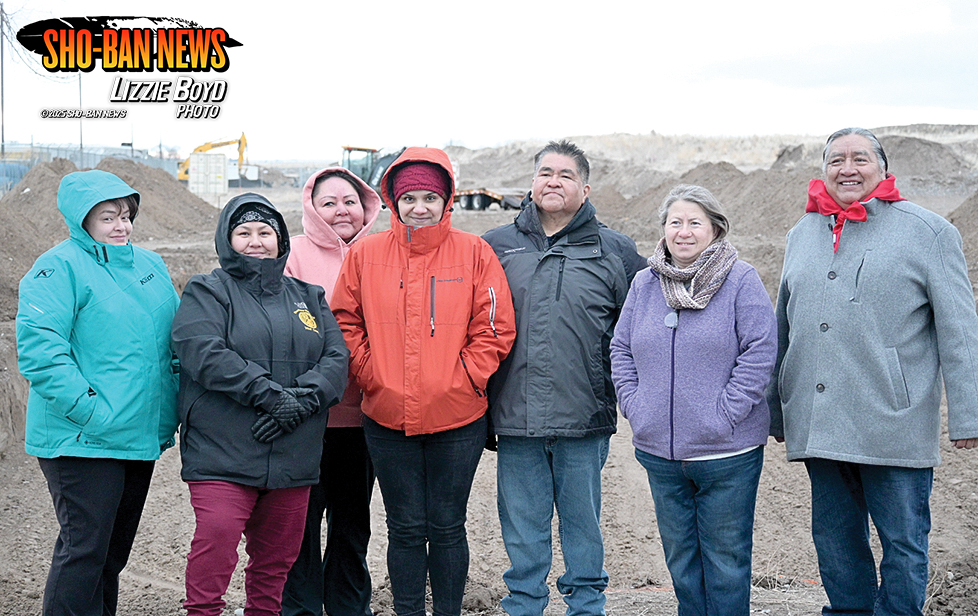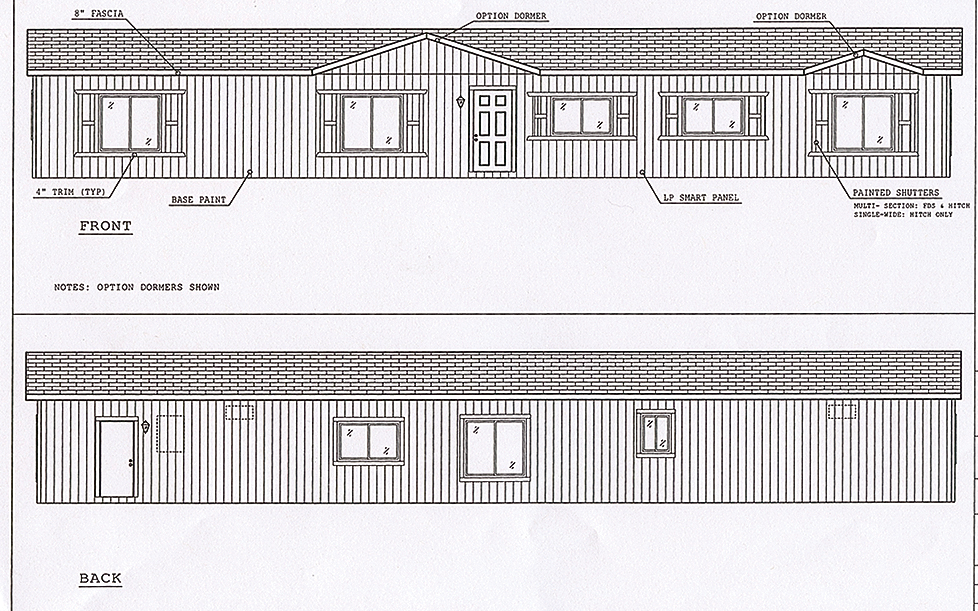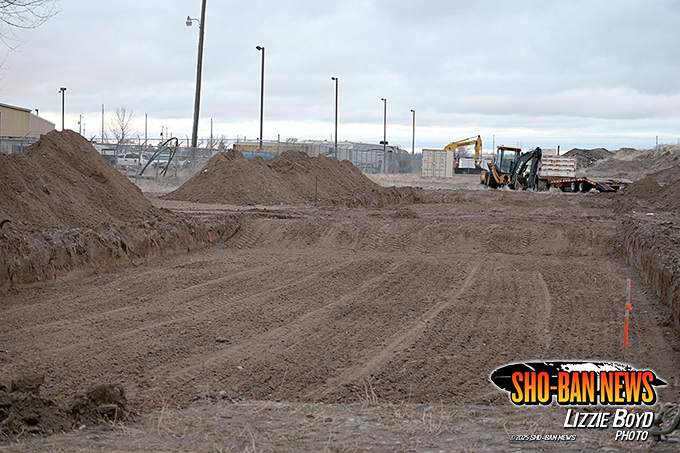Tribal Court's Reentry Program breaks ground on new transitional homes

Tribal Courts staff, along with FHBC Chairman Lee Juan Tendoy, at the transitional homes construction site groundbreaking on Serenity Lane March 14.
By LIZZIE BOYD
Sho-Ban News
FORT HALL — The construction crew broke ground on March 10 and March 14, the Tribal Court’s Reentry Program hosted a sunrise ceremony for two new manufactured transitional homes that will be placed on Serenity Lane — a site location off Agency Road.
Sasha Lopez Interim Reentry Program Manager is currently the only staff member. She said “This is a necessity in our community, to have a safe protected area where you can feel like you can work on your recovery, mental health and life skills to become productive adults.” She said the Reentry Program helps any tribal member of a federally recognized tribe within the community, who have been incarcerated and need help to reenter the community in a positive, independent manner.
Previously some clients may not have anywhere to live after being released from incarceration ending in undesirable living conditions.
Fort Hall Business Council Chairman Lee Juan Tendoy said a prayer over the site location and sang a traditional sunrise ceremony song as the sun rose over the mountains. Tendoy talked about the history of the location area where the homes will be placed. “This use to be an old rodeo arena.” He also talked about how the homes were prayed about for many years and is what is needed in the community — what the future holds for the Tribal people with the new transitional homes.

A close look at the exterior plans of the manufactured transitional homes.
Past program manager Terry Yackley submitted a Coordinated Tribal Assistance Solicitation (CTAS) grant that helped purchase the homes. The grant only requires the program to house 14 people, but the program is trying its best to accommodate as many as they can within their means.
The program is currently working on their policies and procedures for the homes, but plan to have one home house men, and one home house women, each home is a five bedroom, three bath home. The program will be working with the clients and the clients will have up to one year to transition out of the home. Lopez said, “A requirement to be placed into a home is that the inmates do have to be in the Reentry program and have a recovery plan to meet every three months to achieve their goals.” She currently has a list of reentry program inmates awaiting the homes to be completed.
Tribal Court Administrator Brandelle Whitworth said, “The homes were purchased from Clayton Homes and they are also doing the site work. The next phase is to pour foundations for each home — there is already one home ready to be set, so it’s just waiting for the foundation to dry.” “Then once the homes are set, they will have to wait for the utilities to be connected, hopefully the project can be completed by May 2025,” she continued.
Whitworth also said, “with a little over $1.1 million dollars, the money was stretched to purchase two homes and cover the foundation and utility hook ups,” She said the homes will be fully furnished, with beds, couches, washer, dryers, computer area and housing necessities.
She said, “clients will have interaction daily,” as the Courts department is working with various departments to keep the clients on the correct path towards transitioning.

Construction crew conducts site preparations on March 14.
Lopez explained the plan is to introduce them to life skills and find the resources that are available in the community. One of the programs that will work with the clients will be Waapi Kahni Cedar House, as the homes are located close to their center. Another program is 477 to help with job assistance and education purposes.
Vanessa Truchot, Grants Coordinator for Tribal Courts said, “If you ask the Tribal Prosecutors about reoffending in the community is close to 92%, the Courts program is trying to track the statistics better since the Tribes cyber security attack by implementing a case manager system” and be trained to provide better statistics for funding and community report purposes.
She said “reentry housing was one of the biggest barriers for the community.”
Tribal Court staff went to visit two other tribes with transition homes programs Swinomish and Tulalip tribes in Washington to help the program understand and see the vision of their transitional home programs.





